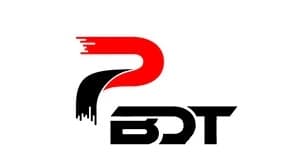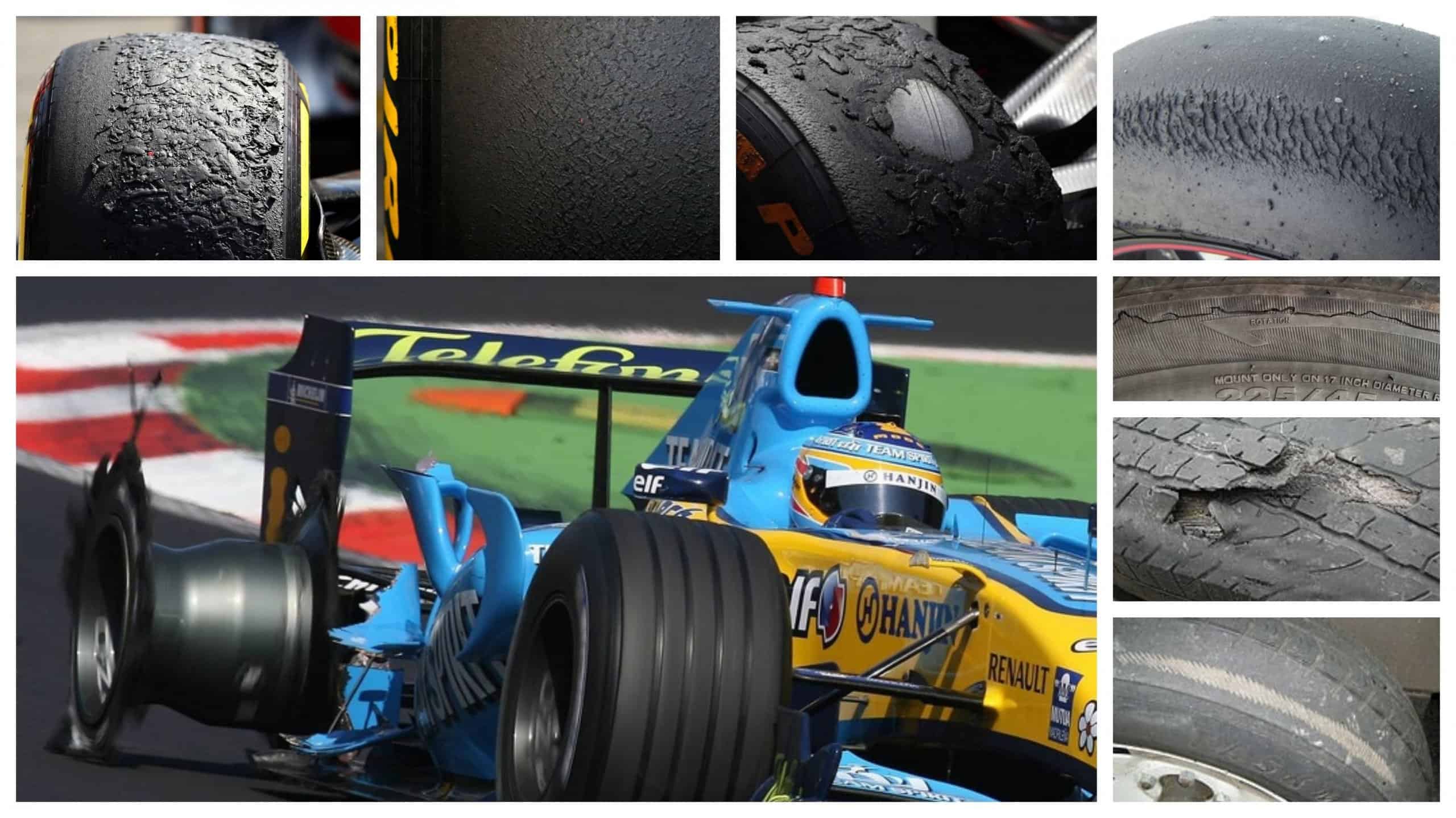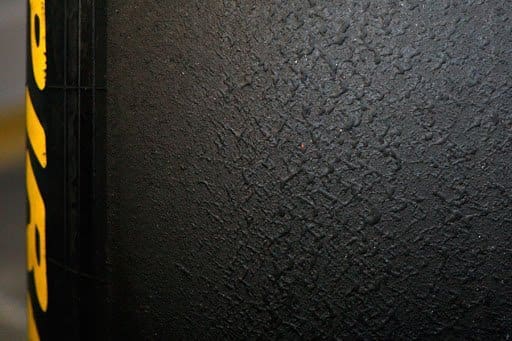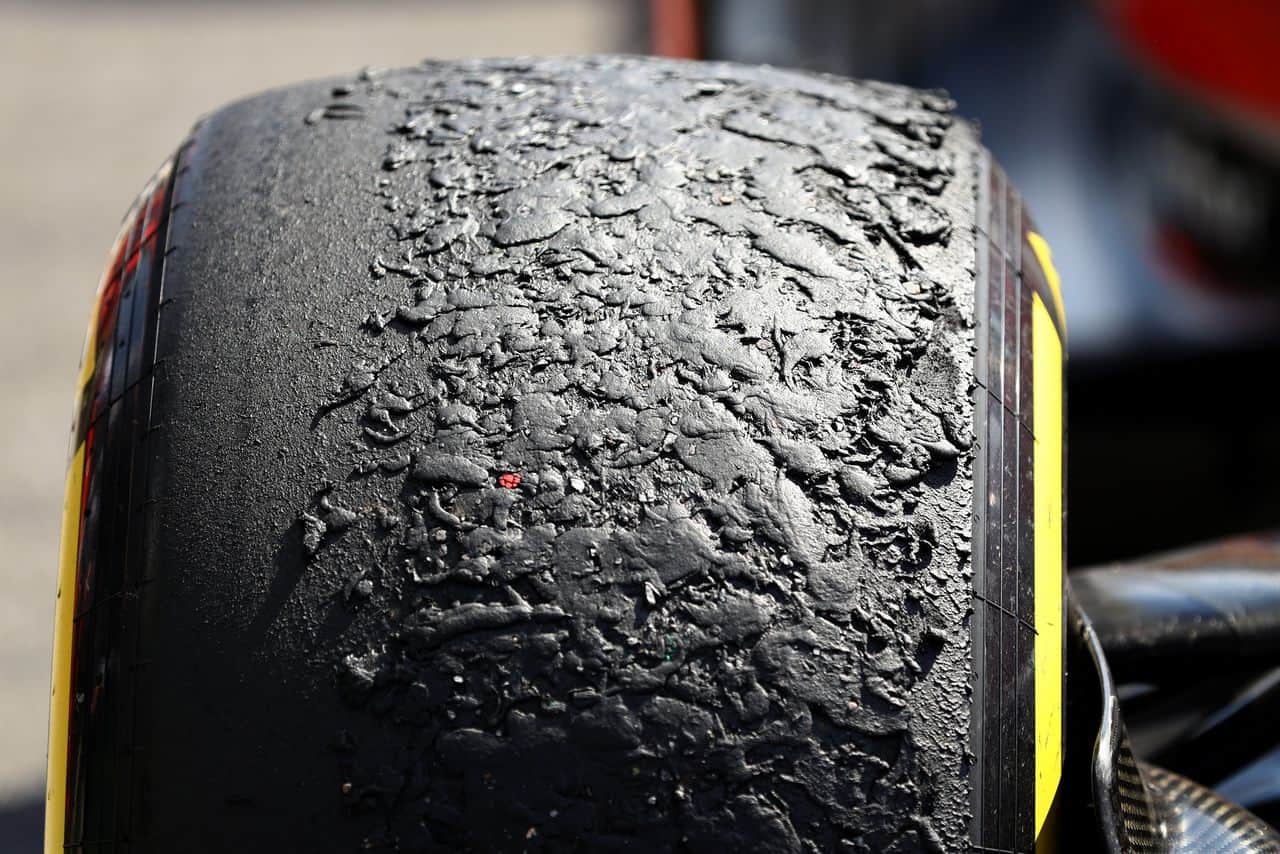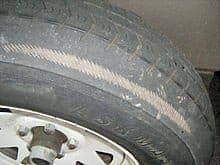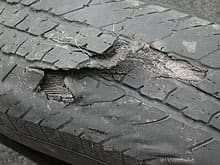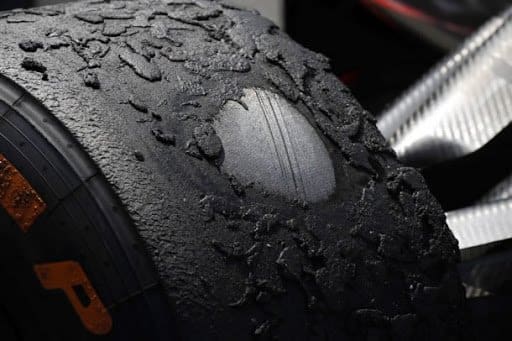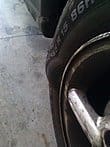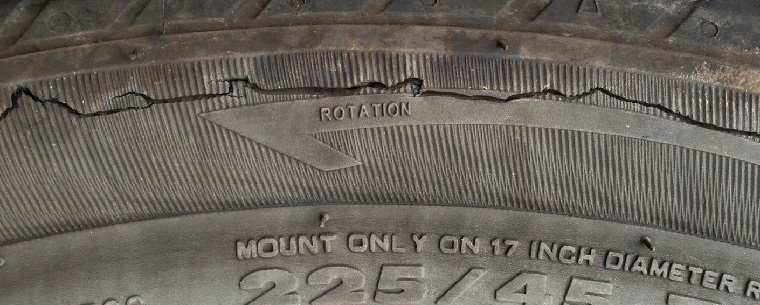Tyres: what is blistering and graining
Tyre graining, blistering and tearing explained
Degraded performance: tyre graining and blistering.
The damages to whic tyre and race tyre in particular are mostly related to the working temperature of the tyre compound. The most common issues are graining and blistering.
Tyre graining.
- Graining, this damage or wear defect occurs in competitions, when the tire, failing to give the proper grip, consequently begins to slide sideways and form lumps, which are interposed between the tread and the road, reducing grip and once they detach from the tread they leave holes, but it can also occur in case of drifting. It is often related to condition in which the tyre could not warm up properly (too cold).
Tyre blistering.
- Blistering, such damage or alteration of the tire occurs in competitions and is characterized by overheating of the tire tread proximal to the carcass, which leads to the creation of air bubbles inside the tread, which causes it to lift and in cases more serious detachment.
How to solve tyre blistering.
In F1, the tyre supplier Pirelli has faced the problem of blistering a numer of times (did you remember the tyre explosion in Silverstone?). In this video (link here), you can understand how Pirelli has tried to solve the problem of blistering in F1 tyres.
Other common tyre damages and failures.
- Tearing, damage to the tread, which occurs in competitions or inadequate use, where it causes excessively impetuous driving and especially in acceleration or braking, on the tread there are regular more or less deep chaps arranged between them longitudinally (perpendicular stress), as the tire does not lose grip, but the tread does not have the physical characteristics to support this effort, due to incorrect preparation, conditions or settings.
- Shoulder wear in the event of prolonged driving with very flat tires, the wear of the rubber occurs on the shoulders of the tire, until it shows the canvases and effectively renders the tire unusable.
- Delamination is the failure of the tread and possibly also the belt or belt pack, which rises and detaches from the tire.
- Flattening or localized wear: occurs if the tire is blocked during braking, this involves local wear and a variation in the tread height, which causes vibration and possible skipping of the tire.
- Structural failure or hernia during a collision with objects or structural defects, the tire carcass may collapse and swelling on the sides may occur.
- Cracking is the formation of small cracks on the tread or shoulder of the tire, these cracks that can occur due to the particular climatic conditions or due to aging of the tire, therefore to a permanent or temporary loss of elasticity of the tire, which exposed to normal stress from use cracking.
- Breakage of the heel is caused or induced by excessive stress during the assembly phase.
